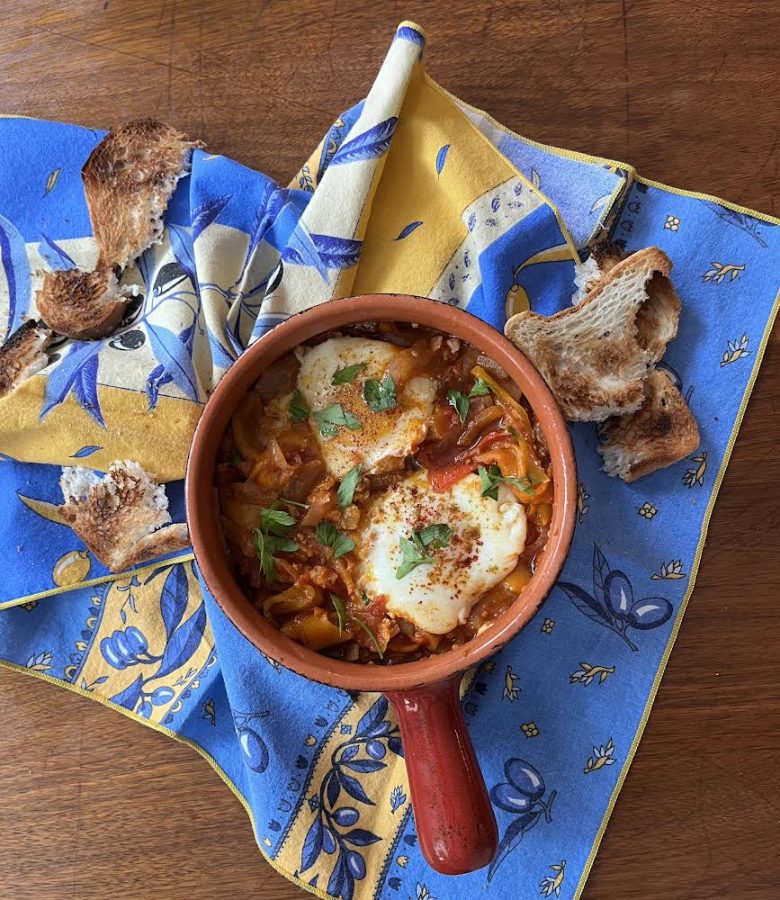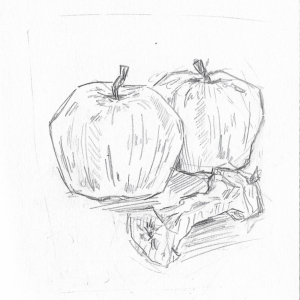Tunisian Shakshouka
October 6, 2022
In Maghrebi/North African Arabic, the word shakshouka refers to “a mixture,” but its origins likely stem from the Amazigh (indigenous North African group) language. With ingredients and origins true to its name, shakshouka is an easy, inexpensive dish that is often made in Maghrebi households when the fridge is empty with leftover vegetables and pantry staples. Its complex and “mixed” origins are a result of centuries of cultural exchanges, from trade and migration to colonialism. The dish is believed to have been created in 16th century Ottoman-ruled Tunisia after exchanges with Spain, which brought tomatoes and peppers to the region, explaining the dish’s similarity to Huevos Rancheros. The dish later spread to the Middle East with the migration of Sephardic Jews in the 1950s and then more recently, was popularized as a staple breakfast around the world.
Ingredients needed (to feed 4):
¼ cup olive oil
1 onion
3 whole peeled garlic cloves
3 sweet bell peppers
2 cups fresh, peeled, tomatoes, or alternatively, 12oz canned whole tomatoes
4 eggs
Bread, preferably baguette or any rustic bread
1 tsp paprika
1 tsp cumin
¼ tsp coriander
½ teaspoon ras el hanout (optional)
Salt & pepper to taste
Feel free to add leftover vegetables to the dish; the most common additions in Tunisia include potatoes and zucchini.
Instructions:
Prep all ingredients. I like to cut onions and peppers into half-inch slices and peel fresh tomatoes by submerging them in hot water for a few seconds and then into an ice bath.
On medium-high heat, begin by sauteing medium-sliced onions and three cloves of garlic in olive oil.
Once the onions become translucent, add paprika, cumin, ras el hanout, coriander, and sliced peppers. Cook on medium-high until onions are caramelized and peppers are soft.
Then, add fresh (or canned) whole peeled tomatoes and ⅓ cup water.
Allow the mixture to simmer on low heat, stirring occasionally, for thirty minutes to an hour. The longer you allow the mixture to cook, the better it will taste. Ideally, the mixture is ready when olive oil begins to collect at the top.
Finally, create holes with a spoon and add an egg into each. Repeat this process for all four eggs. Cover the pot/pan with a lid and allow eggs to cook on medium-low heat for about four minutes or until the whites cook and the yellows are still runny.
Add a pinch of cumin and salt over the eggs, and a drizzle of olive oil, and enjoy with bread. Optionally, in Westernized recipes, many choose to add feta cheese, parsley, and sometimes Labne/yogurt, to cut the spice. Enjoy!
This recipe also appears in our September 2022 print edition.










